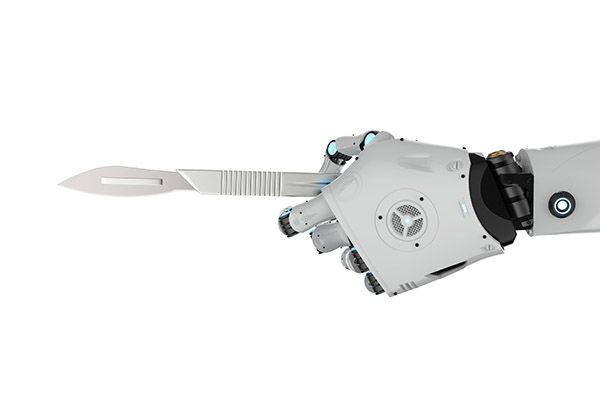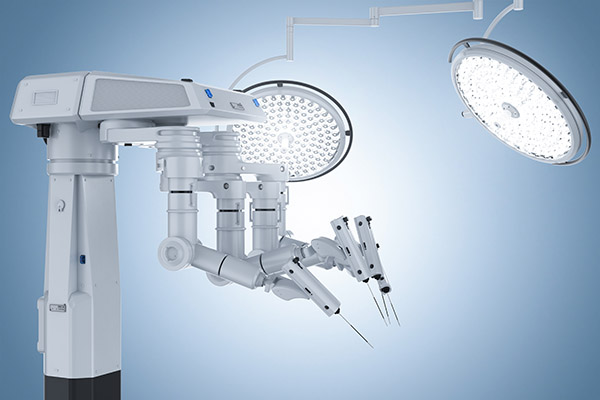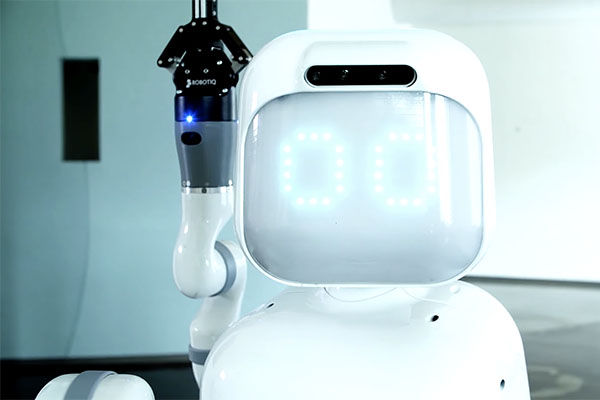EMERGING HEALTHCARE INDUSTRY TRENDS #11: The Increasing Prevalence of Robot-Assisted Surgery
Our series on emerging trends to watch out for in healthcare continues with this blog, exploring how the increasing prevalence of robot-assisted surgery is changing and shaping care. As robotics become less of a fantasy and more of a reality, their presence in care — from robotic surgery to task automation — is a significant opportunity for increasing efficiency within the hospital or clinic.
The concept of robot-assisted surgery has shifted from sci-fi fantasy to reality with incredible speed over the past couple of decades. Today, AI, IoT devices, and other computer-aided technologies are playing new and different roles in many different surgical procedures, from assisting with specific, non-critical care steps and enabling surgeons to conduct technical, precise procedures remotely to even helping clean up after surgery.
The key drivers of robot-assisted surgery are:
– Robotic proliferation: Robotics is becoming increasingly common across all industries as technologies improve — from automotive production lines to supply chain management.
– Growth of AI & machine learning: AI is becoming increasingly powerful, allowing robotics to master more complicated maneuvers and improve the experience.
– Internet of things (IoT) connectivity: As devices become increasingly more interconnected and can communicate with one another, they can adjust workflows, surgical systems and streamline tasks, taking the burden off of HCPs.
– 5G rollout: As fast, reliable connectivity becomes ubiquitous across the country, robotics will become easier to implement without worry about broken connections.
Why robot-assisted surgery matters?
As robots’ presence in the OR continues to grow, they will have lasting impacts on the role of surgical teams, how surgeons work and how they are employed within hospital systems. Robots will see increasing use in all types of surgeries, ranging from prostatectomies, neck surgeries, thoracic, hysterectomy, laparoscopic surgery, and much more. Although valuable for their help in the OR, robotics is cost-prohibitive for many institutions – but that could change quickly. As the trend continues, robot-assisted surgery providers will be forced to demonstrate ROI across implementation and training to ensure widespread adoption.
The Opportunity: Increasing efficiencies with robotic collaboration
Procedures are becoming more complex and specialized, and as these complications increase, robots will provide essential support for surgeons. By putting robotic assistants’ consistency, accuracy, and visualization abilities to use, surgeons can improve their workflows and operations, reducing both human error and uncertainties. Not only will patients be in good hands, but they’ll be in good robotic arms in the near future. Additionally, the use of robots in the operating room opens up new possibilities for minimally invasive surgery, which could mean less scarring, lower risk of infection, less pain, faster recovery, shorter hospital stays, less blood loss, and several other advantages over surgeries performed by even the most dextrous human hands.
For example, KUKA has introduced a lightweight, flexible robot for different applications and surgeries, aiding in diagnostics, treatments, and surgical interventions. The robot’s responsive sensors and intuitive control allow the HCP to collaborate directly with it, allowing for many applications with flexible connections and instrumentations.
The nursing shortage is another influencer of the medical robotics industry. A robotic nurse’s assistant named Moxie can perform basic tasks like PPE distribution, supply gathering, and medication and lab specimen delivery. By managing these mundane tasks, Moxie can help improve overall efficiency and take some of the load off, nurses. The robotic technology is also designed to interact with humans in non-threatening ways and be easily understood action-wise due to human-centric design elements like head elements and proportions.
The Opportunity: Reducing HCPs’ burden through automation
Robots don’t just help with surgical tasks — they also can help relieve the burden on surgeons and their assistants by automating non-critical procedural steps. By putting robots in these more active roles, hospitals and providers can make great use of their human employees by ensuring staff is used for more complex tasks and utilized to their maximum potential.
Though they can’t yet perform an entire surgery autonomously, robots have also been developed to simplify complex procedures. Recently, researchers have experimented with using robots to help locate repair sites in heart valve repairs — a difficult task for even experienced surgeons to execute in real-time. And because the robotic instrument is so adaptable, it also takes input from touch and vision sensors to locate valve leaks in hearts. In animal trials, the surgical robot successfully navigated from its entry point to the damaged valve area 95% of the time. Great results suggest that in some cases, the enhanced processing and sensitivity of these specialized machines could locate issues and guide tools even more effectively than human surgeons.
Further, suturing is an ideal task for robots — it’s all about accuracy, is a reasonably simple task, and can be broken down into easily defined movements. However, robot-assisted surgery has never been excellent at handling soft tissues in the same manner as a surgeon’s hands, which can deal with shifts during manipulation and make tiny incisions. However, the Smart Tissue Autonomous Robot (STAR) is advanced enough to factor in the complexity of more pliable tissues. In testing, the machine outperformed experienced human surgeons when operating on pig specimens on tasks such as making small cuts and small incisions robotically.
Keep a Pulse on Health Tech Trends with Thrive
Technology is changing quickly — and healthcare technology is even more so. Stay up to date on what’s happening in the industry and what to expect this year and into the future with our series on trends in healthcare for 2021.
If you missed the beginning of this series on emerging healthcare industry trends in 2021, make sure to go back and explore our previous blogs on everything from patient empowerment to the expanding continuum of care. And don’t forget to keep checking back as we continue to add to this 13-part series.
With years of experience as an expert healthcare technology consultant, THRIVE can help you protect your business now and into the future. Contact THRIVE today.
RELATED POSTS
If you missed any of the previous posts in this blog series on the future trajectory of healthcare, you can find them here:
Week 1: The Shifting Point of Care
Week 2: The Hyper Personalization of Care
Week 3: Expanding the Continuum of Care
Week 4: Patient Empowerment
Week 5: Physician Empowerment
Week 6: Orchestrating Operating Room Efficiency
Week 7: Human-centered Healthcare Design
Week 8: Improving Medical Device UX Design
Week 9: Improving Contextual Design & Cognitive Empathy
Week 10: Enhanced Data Visualization Tools
Week 12: Behavioral Design for Medical
Week 13: Humanized Patient-Provider Interactions







